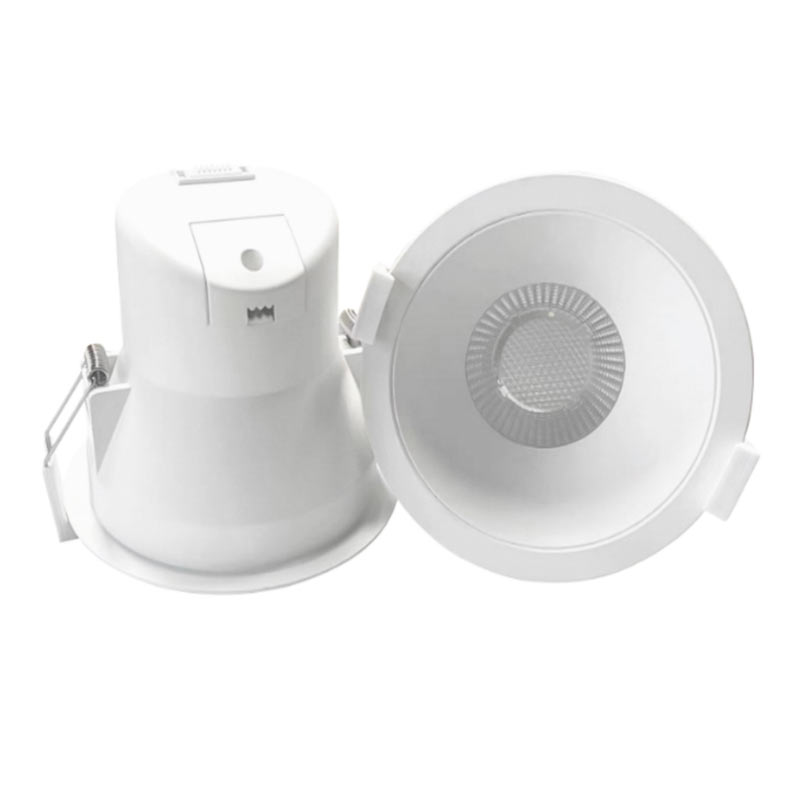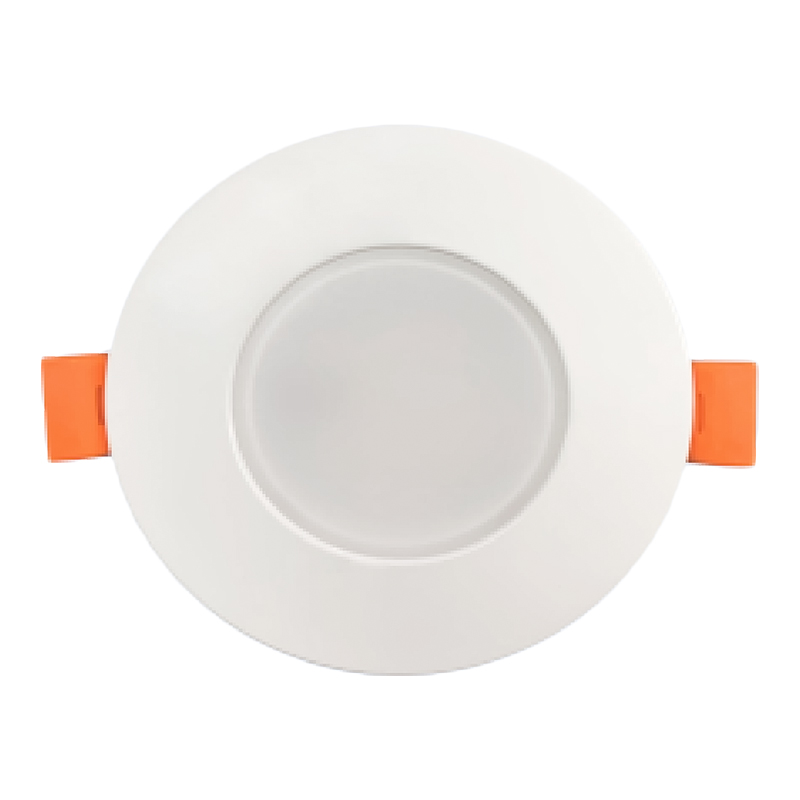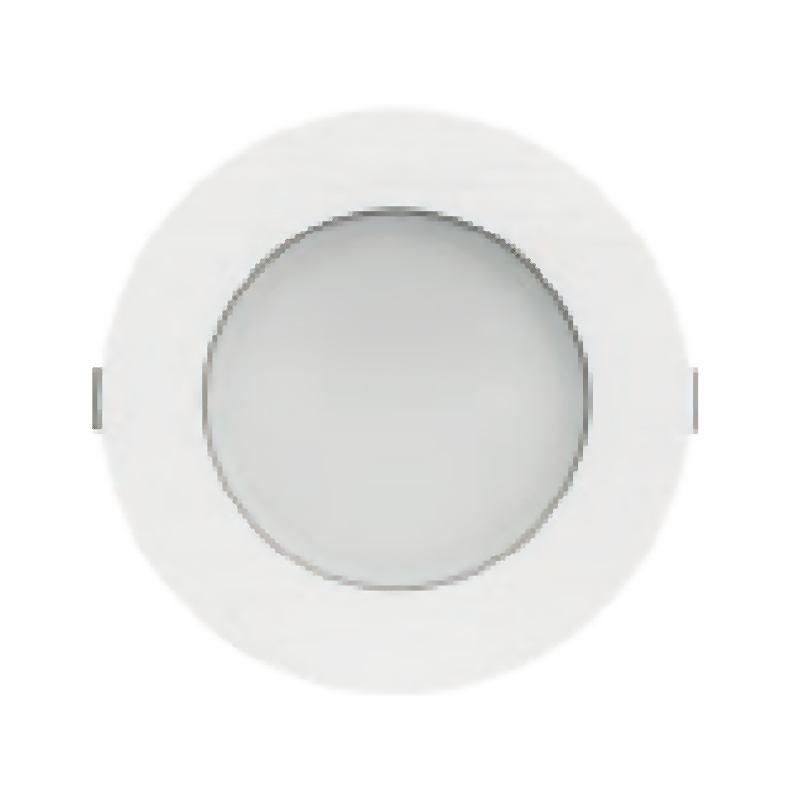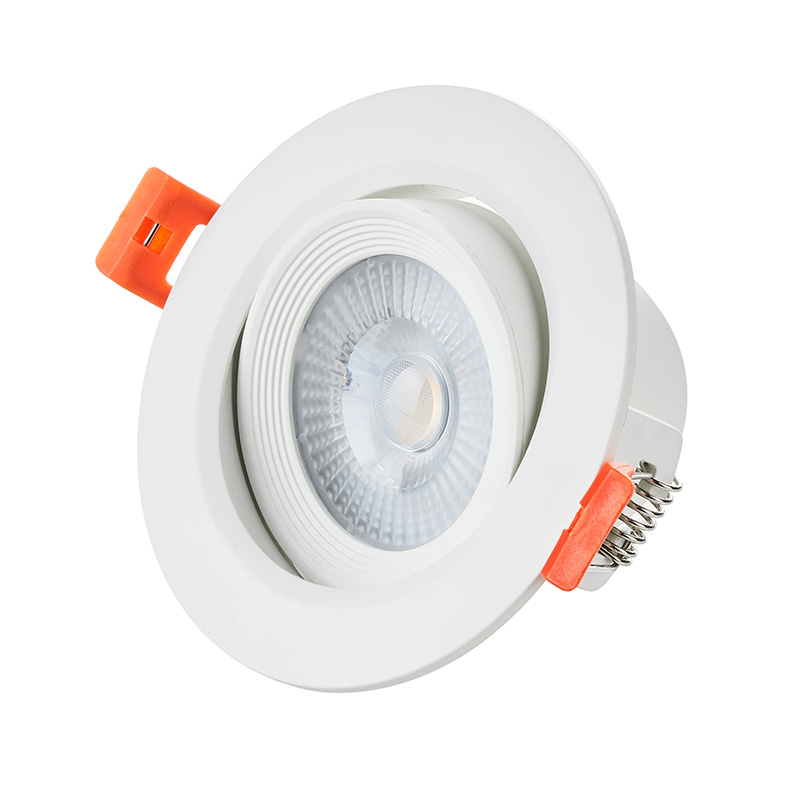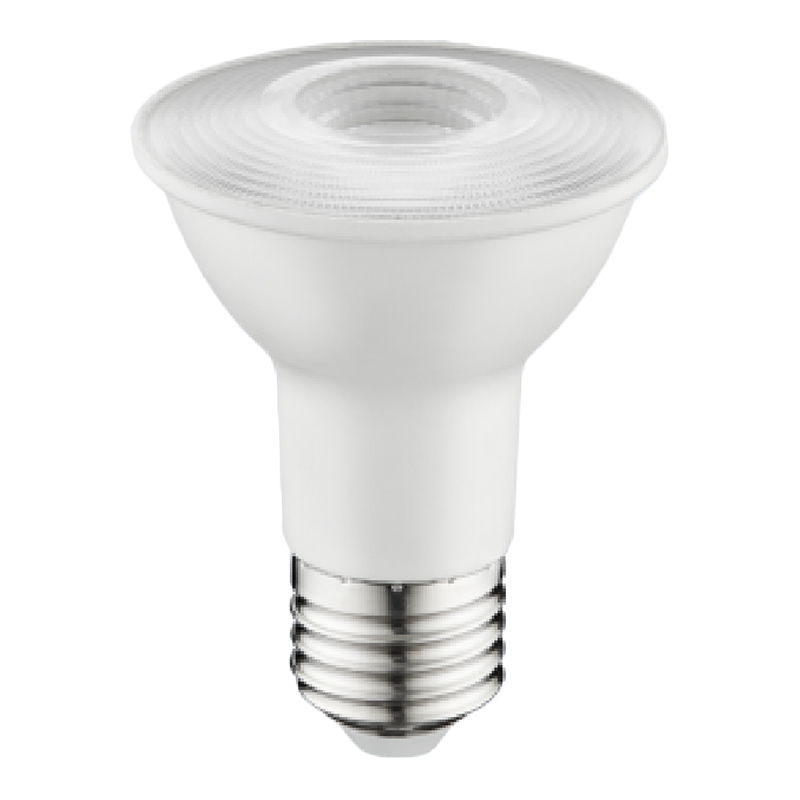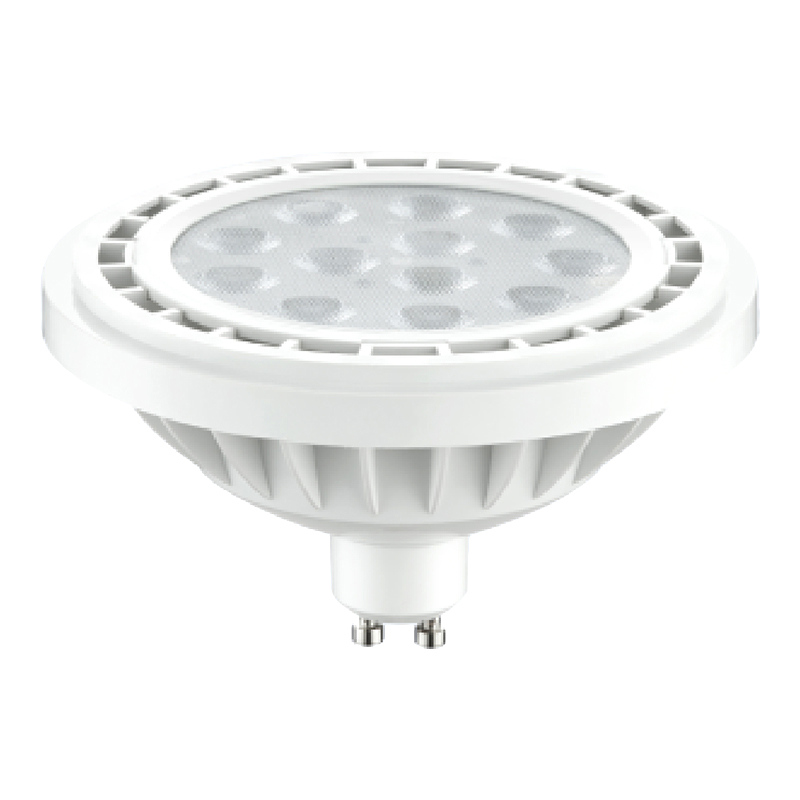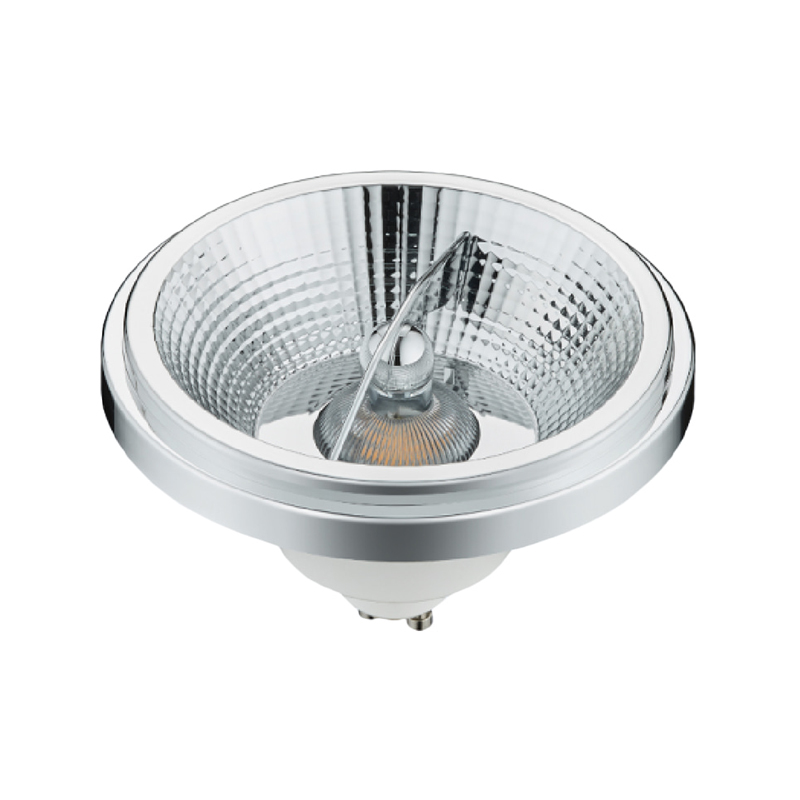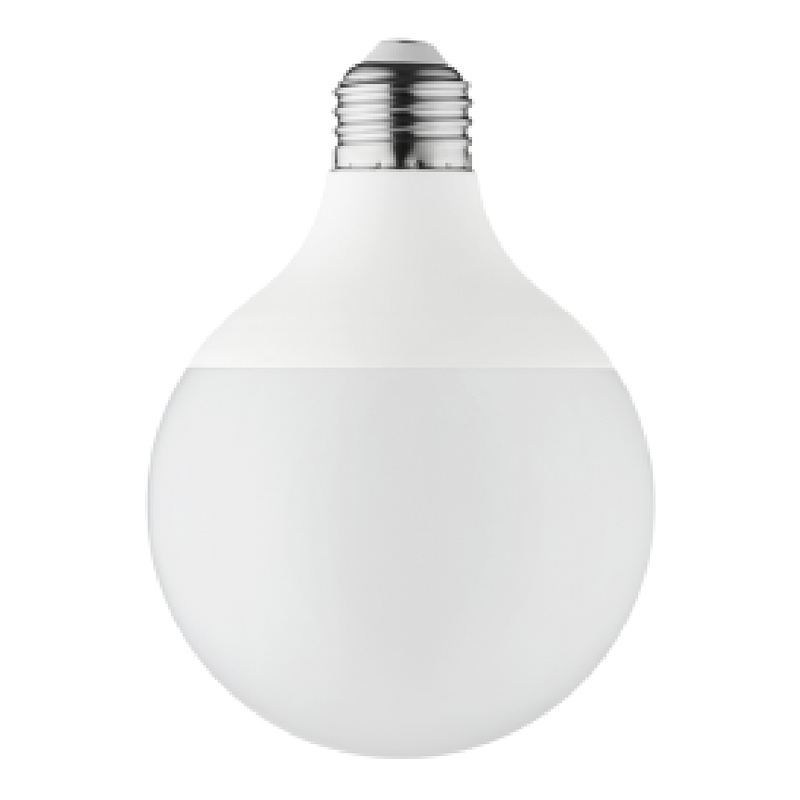Introduction to LED Ceiling Lights LED ceiling lights have become a popular choice for modern homes,...
Understanding LED Wall Lights: How They Work and Save Energy
What Are LED Wall Lights?
LED wall lights are a type of lighting fixture that combines the energy efficiency of Light Emitting Diodes (LEDs) with the functional and aesthetic qualities of wall-mounted lamps. Unlike traditional incandescent or fluorescent wall lights, which rely on heating a filament or gas discharge to produce light, LED wall lights utilize semiconductors that emit light when an electric current passes through them. This fundamental difference not only allows for dramatically lower energy consumption but also enables compact designs, long operational lifespans, and a wide variety of color temperatures and styles.
The construction of LED wall lights typically consists of a few core components. These include the LED chip itself, which is the primary light-emitting element, a heat sink to dissipate the small amount of heat generated, a driver to regulate voltage and current, and the outer fixture that provides aesthetic appeal and protects the electronics. The combination of these components allows LED wall lights to offer precise lighting control, directional illumination, and a durable solution for both indoor and outdoor environments.
In addition to their functionality, LED wall lights have become a design element in modern architecture. They are available in minimalist, industrial, rustic, and decorative styles, making them versatile for residential, commercial, and hospitality settings. Whether installed as accent lights, pathway illumination, or decorative sconces, LED wall lights provide not just light but also enhance the visual ambiance of a space.
The Working Principle of LED Wall Lights
To understand why LED wall lights are so energy-efficient, it is important to delve into how they generate light. LEDs operate on the principle of electroluminescence. When a suitable voltage is applied across the semiconductor material, electrons move across the junction from the negative side (n-type semiconductor) to the positive side (p-type semiconductor). When these electrons recombine with electron holes on the p-type side, energy is released in the form of photons, which is the light we see.
Unlike incandescent bulbs, which generate light through the heating of a filament, or fluorescent lamps, which excite gas atoms to emit light, LEDs produce light through a quantum process that does not rely on heat generation. This direct conversion of electricity to light significantly reduces wasted energy. In traditional bulbs, more than 90% of the energy is often lost as heat, whereas LEDs can convert 80–90% of energy directly into visible light, depending on the design.
The driver circuitry in LED wall lights plays a critical role in regulating current and voltage. LEDs are sensitive to fluctuations in electrical supply, and overvoltage can damage the semiconductor or reduce its lifespan. Modern LED drivers use sophisticated techniques such as pulse-width modulation (PWM) and constant-current regulation to maintain consistent illumination. Advanced drivers may also include dimming capabilities, allowing users to adjust brightness without affecting energy efficiency.
Another important aspect of LED wall lights is thermal management. While LEDs produce less heat than traditional lamps, they are still sensitive to temperature. Excess heat can degrade the semiconductor over time and reduce luminous efficacy. The inclusion of heat sinks, often made from aluminum or other thermally conductive materials, helps dissipate heat efficiently. Some high-end LED wall lights also incorporate thermal sensors that adjust current output to prevent overheating, thereby extending lifespan and maintaining energy efficiency.
Energy Efficiency Mechanisms in LED Wall Lights
The energy-saving benefits of LED wall lights come from several interrelated mechanisms. First, as mentioned, the fundamental conversion of electricity to light in LEDs is much more efficient than in incandescent or halogen sources. For example, a typical 10-watt LED wall light can produce the same luminous output as a 60-watt incandescent bulb, achieving more than 80% energy savings.
Second, LED wall lights provide directional lighting. Unlike traditional bulbs that emit light in all directions, LED wall lights can be designed to direct light precisely where it is needed. This reduces wasted light and ensures that illumination is focused on pathways, walls, or areas that require accent lighting. Directional lighting is particularly beneficial in outdoor applications, such as pathway lighting or exterior wall illumination, where unnecessary spill light contributes to energy waste and light pollution.
Third, the ability to dim LED wall lights enhances energy efficiency further. Dimmable LEDs reduce energy consumption proportionally to the reduction in brightness. Combined with smart controls or motion sensors, LED wall lights can be programmed to operate at lower intensities when full illumination is not needed, or to activate only when occupants are present. For outdoor installations, this can result in significant energy savings over time while maintaining safety and visibility.
Fourth, the long lifespan of LED wall lights contributes to overall energy efficiency in an indirect manner. Traditional lighting systems often require frequent replacements, which increases the energy and material costs associated with manufacturing, shipping, and disposal. LEDs, with operational lifespans ranging from 25,000 to 50,000 hours or more, reduce these secondary energy costs significantly. A single LED wall light can last 10 to 15 times longer than a typical incandescent fixture, creating both financial savings and a smaller environmental footprint.
Advancements in LED chip technology and luminaire design have further enhanced energy efficiency. High-efficacy LEDs, often exceeding 150 lumens per watt, paired with optical lenses and reflectors, ensure that nearly all generated light is usefully directed. Innovations in phosphor coatings allow LEDs to emit a broader spectrum of white light while maintaining high efficiency. These design improvements ensure that modern LED wall lights deliver bright, visually appealing illumination at minimal energy expenditure.
Components of LED Wall Lights That Contribute to Energy Saving
LED Chips
The quality and design of the LED chip itself are fundamental to energy efficiency. High-quality chips have a high luminous efficacy, low thermal resistance, and stable color output. Multi-chip configurations allow for higher brightness without increasing current, reducing energy loss and heat generation.
Drivers
LED drivers regulate voltage and current to ensure the LED operates within safe parameters. Efficient drivers minimize energy lost as heat and enable dimming, motion sensing, and integration with smart home systems. Modern drivers use high-frequency switching techniques to reduce electrical losses and prevent flickering, which also improves visual comfort.
Heat Sinks and Thermal Management
Even though LEDs generate less heat than incandescent bulbs, efficient thermal management ensures that energy is not wasted and that LEDs maintain their luminous efficiency over time. Heat sinks and thermal interface materials channel heat away from sensitive components, maintaining optimal operating conditions.
Optics and Reflectors
LED wall lights often include lenses, diffusers, and reflectors to control the direction and distribution of light. Properly engineered optics ensure that light reaches the intended areas efficiently, reducing the need for higher wattage and minimizing wasted energy.
Housing and Material
The housing material, such as aluminum or die-cast alloys, contributes not only to durability but also to thermal management. Corrosion-resistant materials allow outdoor LED wall lights to operate efficiently in varying climates without degradation in performance.
Applications Where Energy Efficiency Is Maximized
LED wall lights can save energy in a variety of settings. In residential homes, using LED wall lights in hallways, staircases, and bedrooms reduces electricity consumption while providing effective illumination. Outdoor installations, including garden walls, pathways, and building façades, benefit from the directional and dimmable nature of LEDs, which ensures that energy is only used when necessary.
Commercial and hospitality spaces, such as hotels, offices, and restaurants, often use large numbers of wall-mounted lights. Switching to LED wall lights in these environments can dramatically reduce overall energy bills. In addition, the longevity of LEDs minimizes maintenance disruption, reducing the operational energy costs associated with replacing traditional lamps.
In urban environments, LED wall lights contribute to “smart lighting” initiatives, integrating with motion sensors, timers, and adaptive brightness systems to reduce unnecessary lighting during low-traffic periods. This intelligent energy management is especially important in city streets, parking lots, and public buildings, where lighting accounts for a significant portion of total electricity consumption.
Top Features of LED Wall Lights That Make Them Stand Out
Energy Efficiency and Low Power Consumption
One of the most prominent features of LED wall lights is their exceptional energy efficiency. Traditional lighting systems such as incandescent and halogen lamps convert a significant portion of electrical energy into heat rather than visible light, often resulting in energy losses of over 90%. In contrast, LED wall lights utilize electroluminescence to directly convert electrical energy into photons, achieving efficiency rates of up to 90% in modern high-quality LEDs. This efficiency allows LED wall lights to provide the same level of illumination as traditional lighting fixtures while consuming a fraction of the power.
LED wall lights are available in various wattages that produce comparable lumens to much higher-wattage incandescent or fluorescent lamps. For instance, a 10-watt LED wall light can provide illumination equivalent to a 60-watt incandescent bulb. This power reduction translates into immediate cost savings on electricity bills and contributes to environmentally sustainable lighting practices. The low power consumption is particularly advantageous in spaces where multiple wall lights are installed, such as hallways, commercial buildings, hotel corridors, and outdoor facades.
Modern LED wall lights also incorporate advanced driver circuits that maintain consistent current and voltage, which further enhances energy efficiency. High-quality drivers reduce energy loss from electrical fluctuations and enable features such as dimming and adaptive lighting controls. Dimmable LED wall lights allow users to reduce brightness levels when full illumination is unnecessary, thereby optimizing energy use while maintaining visual comfort. Some designs include motion sensors and daylight harvesting technology, which automatically adjust the output of LED wall lights according to ambient conditions or occupancy patterns, further maximizing energy savings.
Long Lifespan and Durability
Another key feature that sets LED wall lights apart is their long operational lifespan. Standard incandescent bulbs typically last 1,000 to 2,000 hours, and even compact fluorescent lamps (CFLs) have an average lifespan of 8,000 to 12,000 hours. In contrast, LED wall lights can operate effectively for 25,000 to 50,000 hours or more, depending on the quality of the LED chip, driver, and thermal management. This extended lifespan reduces the frequency of replacements, thereby lowering maintenance costs and minimizing environmental impact from disposed bulbs.
Durability is also enhanced through robust materials and construction. LED wall lights often feature aluminum or stainless steel housings that resist corrosion, impact, and wear, particularly in outdoor environments. Many outdoor LED wall lights are rated with high ingress protection (IP) levels such as IP65 or IP66, making them resistant to water and dust ingress. This ensures consistent performance in various weather conditions, including rain, snow, and extreme heat. Some designs also include shatterproof covers and tempered glass panels, which protect the LED chips from mechanical damage and environmental stress.
LED wall lights are less prone to failure from frequent switching. Unlike fluorescent lamps, which experience reduced lifespans with frequent on-off cycles, LEDs can handle rapid switching without significant degradation, making them ideal for motion-sensor applications and spaces with variable lighting schedules. The combination of long lifespan, mechanical durability, and resistance to environmental factors makes LED wall lights an optimal choice for both indoor and outdoor settings.
Design Versatility and Aesthetic Appeal
LED wall lights are recognized for their wide range of design options that cater to both functional and decorative purposes. They can be found in minimalist, modern, industrial, rustic, and artistic styles, enabling seamless integration into various interior and exterior design schemes. Designers often use LED wall lights as accent pieces, combining lighting functionality with visual appeal to enhance the ambiance of a space.
The versatility of design also extends to the shape, size, and configuration of the lights. Common forms include cylindrical sconces, rectangular panels, linear strip lights, and artistic sculptural fixtures. Some LED wall lights incorporate adjustable angles or swiveling heads, allowing users to direct light precisely where it is needed, whether to highlight artwork, illuminate hallways, or create dramatic shadows on textured walls.
Color temperature customization is another important design feature. LED wall lights are available in warm white (2700K–3000K), neutral white (3500K–4000K), and cool white (5000K–6500K), enabling designers and homeowners to choose lighting that complements the room’s function and aesthetic. Warm tones are ideal for living rooms and bedrooms, creating a cozy atmosphere, whereas cool tones are suitable for workspaces, hallways, or outdoor areas requiring bright, alert lighting. Advanced LED wall lights also offer adjustable color temperature or RGB lighting, allowing dynamic changes in ambiance for entertainment, relaxation, or seasonal decor.
High-Quality Light Output
LED wall lights provide high-quality light output with superior color rendering and minimal flicker. The color rendering index (CRI) of modern LEDs often exceeds 80, with premium products reaching CRI 90 or above. A high CRI ensures that colors appear natural and vivid under LED illumination, making them suitable for residential interiors, galleries, retail displays, and hospitality environments where accurate color perception is important.
LED wall lights also provide uniform illumination, avoiding hotspots or uneven brightness that can occur with traditional wall-mounted lamps. The use of diffusers, lenses, and reflectors ensures a smooth distribution of light across the desired area. Optical engineering allows for precise control of beam angles, enabling focused accent lighting or wide area illumination without increasing energy consumption.
Flicker-free operation is another distinguishing feature. Many early-generation LEDs exhibited noticeable flickering due to inadequate driver design, which could cause eye strain, headaches, or discomfort. Modern LED wall lights employ high-frequency drivers and pulse-width modulation techniques to eliminate perceptible flicker, ensuring comfortable and safe lighting for long-term use.
Smart and Adaptive Features
A growing number of LED wall lights incorporate smart technologies that enhance functionality and energy efficiency. These features include motion detection, dimming, programmable schedules, and integration with home automation systems. Motion-activated LED wall lights are particularly useful for hallways, staircases, and outdoor pathways, illuminating spaces only when movement is detected, thus reducing unnecessary energy use.
Dimmable LED wall lights allow users to adjust brightness levels to suit different activities, such as reading, relaxing, or entertaining. Integration with smart home platforms enables remote control through mobile apps or voice commands, offering convenience and adaptability. Some advanced systems can even adjust lighting based on ambient daylight levels, occupancy, or pre-set lighting scenes, providing intelligent illumination while minimizing energy consumption.
Adaptive LED wall lights can also include color-changing capabilities, either for mood lighting or functional purposes. RGB or tunable white LED wall lights allow for dynamic lighting environments in commercial spaces, restaurants, or residential settings. This adaptability not only enhances aesthetics but also creates functional lighting solutions that can respond to user needs or environmental conditions in real time.
Safety and Environmental Benefits
LED wall lights offer significant safety and environmental advantages compared to traditional lighting technologies. Their low heat emission reduces the risk of burns or fire hazards, making them safer for installation near flammable materials or in confined spaces. The absence of toxic materials, such as mercury found in CFLs, makes LED wall lights more environmentally friendly and easier to dispose of responsibly.
The durability and long lifespan of LED wall lights contribute to sustainability by reducing waste from frequent replacements. Their energy efficiency translates into lower greenhouse gas emissions from power generation, making them a key component of eco-conscious building designs. Some LED wall lights are manufactured using recyclable materials, and innovations in phosphor coatings and chip design further reduce environmental impact without compromising performance.
Customization and Integration Options
Many LED wall lights offer extensive customization options that allow integration into complex lighting schemes. Adjustable beam angles, dimming capabilities, and modular designs make it possible to create layered lighting environments, combining ambient, task, and accent lighting. Wall lights can be paired with ceiling fixtures, recessed lighting, or floor lamps to achieve a cohesive and visually appealing lighting plan.
Customizable installation options also include surface-mounted, recessed, or semi-recessed designs, as well as compatibility with both indoor and outdoor electrical systems. Designers and homeowners can select finishes, colors, and textures that complement architectural elements or interior décor themes. The ability to seamlessly integrate LED wall lights into smart lighting networks further enhances their adaptability, providing synchronized control across multiple zones or buildings.
Resistance to Environmental Stress
LED wall lights are engineered to withstand a wide range of environmental conditions. High-quality fixtures feature weatherproof housings, UV-resistant coatings, and thermal management systems that protect against temperature fluctuations, humidity, and direct sunlight. This makes them ideal for exterior walls, garden lighting, pathways, and building facades where exposure to elements is unavoidable.
Indoor LED wall lights are resistant to vibrations, shocks, and mechanical impacts, making them suitable for commercial spaces, public buildings, and areas with high traffic. Their solid-state construction eliminates fragile filaments or gas-filled tubes, contributing to durability and reliability even in demanding applications.
LED Wall Lights vs Traditional Lighting: Cost and Efficiency Comparison
Overview of Traditional Wall Lighting Technologies
Traditional wall lighting technologies primarily include incandescent lamps, halogen lamps, and compact fluorescent lamps (CFLs). Each of these technologies relies on different physical principles to produce light, and each has inherent limitations in terms of energy efficiency, lifespan, and operational cost.
Incandescent wall lights generate light by passing an electrical current through a tungsten filament. As the filament heats up to thousands of degrees Celsius, it emits visible light. While incandescent bulbs provide a warm and aesthetically pleasing glow, they are extremely inefficient, converting only about 10% of electricity into visible light, with the remainder lost as heat. This inefficiency results in high operational costs, particularly in spaces that require long or frequent periods of illumination.
Halogen wall lights, a subtype of incandescent technology, operate similarly but contain a halogen gas within the bulb to recycle evaporated tungsten back onto the filament. This allows halogen lamps to run at higher temperatures, slightly improving luminous efficacy and lifespan. However, they still suffer from high energy consumption and produce substantial heat, which can increase cooling costs in indoor spaces.
Compact fluorescent wall lights (CFLs) function by exciting mercury vapor to emit ultraviolet light, which then interacts with a phosphor coating to produce visible light. CFLs are more energy-efficient than incandescent and halogen lamps, converting roughly 60–70% of electricity into visible light. Their lifespan typically ranges from 8,000 to 12,000 hours, considerably longer than incandescent lamps but still shorter than LEDs. CFLs also contain mercury, requiring careful disposal to prevent environmental contamination.
Traditional wall lights, while familiar and often inexpensive upfront, incur higher long-term costs due to energy inefficiency, shorter lifespans, frequent replacements, and potential maintenance challenges. Their high heat output and sensitivity to switching cycles further limit their effectiveness in modern lighting applications.
Energy Consumption Comparison
The energy efficiency of lighting is measured in lumens per watt (lm/W), which indicates how much visible light is produced per unit of electrical power consumed. Traditional incandescent wall lights typically achieve 10–17 lm/W, halogen wall lights reach 16–24 lm/W, and CFLs range from 35–60 lm/W. By contrast, modern LED wall lights often exceed 100–150 lm/W, with premium high-efficacy LEDs reaching up to 200 lm/W in controlled laboratory conditions.
The practical implications of this efficiency difference are significant. A 60-watt incandescent wall light produces roughly the same brightness as a 10–15 watt LED wall light. This difference in power consumption translates directly into reduced electricity bills. In applications with multiple fixtures or continuous operation, such as office corridors, hallways, hotels, and exterior facades, switching from incandescent or halogen wall lights to LEDs can reduce energy use by 70–85%.
LED wall lights maintain consistent brightness across a range of power inputs when paired with advanced drivers, whereas traditional lamps often exhibit reduced light output as they age. CFLs, for example, can experience lumen depreciation over time, resulting in uneven illumination and higher energy use to maintain desired brightness.
LED wall lights also benefit from directional lighting. Unlike incandescent or CFL bulbs that emit light in all directions and often require reflectors or diffusers to control output, LEDs can be engineered to project light precisely where needed. This minimizes wasted light and ensures that every watt of power contributes effectively to the intended illumination, further enhancing energy efficiency in both indoor and outdoor applications.
Cost Analysis: Upfront Investment vs Long-Term Savings
The upfront cost of LED wall lights is generally higher than that of incandescent, halogen, or CFL wall lights. A basic LED wall fixture may cost two to four times more than a comparable incandescent or halogen wall sconce. Premium LED wall lights with advanced features, such as dimming, smart controls, and high-quality materials, can have a higher initial investment.
Despite the higher purchase price, the long-term financial benefits of LED wall lights are substantial. Reduced electricity consumption significantly lowers monthly energy bills. For instance, replacing ten 60-watt incandescent wall lights with 10-watt LEDs can save hundreds of kilowatt-hours annually, depending on usage patterns. In commercial buildings with dozens or hundreds of fixtures, the cost savings scale exponentially.
Maintenance and replacement costs further differentiate LED wall lights from traditional lighting. Incandescent bulbs typically last 1,000–2,000 hours, halogen lamps around 2,000–4,000 hours, and CFLs 8,000–12,000 hours. LEDs, in contrast, can function for 25,000–50,000 hours or more. In spaces with high installation or labor costs, such as hotels, office buildings, or exterior wall lighting, the reduced frequency of replacement translates into significant savings over the lifetime of the fixture. This includes not only the cost of the bulbs themselves but also the labor, equipment, and potential downtime associated with replacing traditional lamps.
The combination of lower operating costs and reduced maintenance expenditure ensures that LED wall lights deliver superior return on investment (ROI) over a 5–10 year period, often offsetting the initial higher purchase cost within the first 1–3 years of operation.
Lifespan Comparison
The operational lifespan of lighting fixtures is a crucial factor in cost and efficiency comparisons. Incandescent wall lights last approximately 1,000–2,000 hours, halogen lamps typically 2,000–4,000 hours, and CFLs 8,000–12,000 hours. LED wall lights, however, consistently operate for 25,000–50,000 hours or longer.
A single LED wall light can, therefore, replace 10 to 25 incandescent bulbs or 2–5 CFLs over its lifetime. This longevity reduces both financial and environmental costs, decreasing the number of discarded bulbs and the associated landfill and recycling burden. Long-life operation also ensures consistent illumination quality, avoiding frequent replacements that can disrupt environments or require significant labor in commercial installations.
LED wall lights also demonstrate superior resilience to frequent switching and voltage fluctuations. Traditional incandescent and halogen lamps degrade with repeated on-off cycles, while CFLs may take time to reach full brightness and can be sensitive to frequent switching. LEDs, by contrast, can handle rapid cycling without performance degradation, making them ideal for applications with motion sensors, timers, or variable occupancy schedules.
Heat Emission and Safety Considerations
Heat emission affects both efficiency and safety. Incandescent and halogen wall lights generate a large amount of heat as a byproduct of light production. This can increase cooling costs in climate-controlled environments and pose burn or fire risks in proximity to flammable surfaces. CFLs emit less heat than incandescent lamps but still operate at elevated temperatures compared to LEDs.
LED wall lights, in contrast, produce minimal heat due to their efficient electroluminescent process. Heat is managed through integrated heat sinks and thermal interface materials, ensuring optimal operation and preventing overheating. The low operating temperature of LED wall lights reduces energy waste, contributes to occupant safety, and allows installation in confined or sensitive areas without the risk of heat damage.
This heat advantage also extends the operational life of LED wall lights. Excessive heat accelerates lumen depreciation and material degradation in traditional lamps, whereas LED wall lights maintain stable performance over time due to effective thermal management.
Environmental Impact
LED wall lights offer significant environmental benefits over traditional lighting. Incandescent and halogen lamps are highly energy-intensive and contribute substantially to greenhouse gas emissions through electricity consumption. CFLs, while more efficient, contain mercury and require careful handling and disposal to avoid environmental contamination.
LED wall lights, by consuming less electricity and avoiding hazardous materials, reduce carbon footprint and environmental risk. The reduced need for frequent replacements also decreases resource consumption associated with manufacturing, transportation, and disposal of bulbs. Many modern LED wall lights are constructed from recyclable materials, further enhancing sustainability.
The integration of smart controls, dimming, and motion sensors in LED wall lights enables energy optimization on a per-use basis, minimizing environmental impact without compromising lighting quality. In large-scale applications, such as street lighting, commercial corridors, or exterior architectural lighting, the environmental advantages of LEDs are amplified, making them the preferred choice for sustainable development projects.
Indoor Applications of LED Wall Lights for Modern Homes
Living Rooms and Lounges
LED wall lights have become an essential element in modern living room design, providing both functional and aesthetic illumination. In living rooms, wall-mounted LEDs are often used to supplement overhead lighting, creating layered lighting schemes that enhance depth and ambiance. These fixtures can act as accent lighting to highlight architectural features, artwork, or textured walls, contributing to a sophisticated and dynamic visual environment.
Modern LED wall lights in living spaces often feature adjustable brightness and color temperature, enabling homeowners to tailor lighting to different activities. For example, warmer tones around 2700K to 3000K create a cozy and intimate atmosphere for relaxation or entertainment, while cooler tones around 4000K to 5000K provide clear, vibrant light suitable for reading or focused tasks. The ability to dim LED wall lights further enhances their versatility, allowing smooth transitions between bright, active settings and subdued, relaxing moods.
In addition to illumination, the design of LED wall lights complements contemporary interior aesthetics. Minimalist and geometric designs integrate seamlessly into modern furniture arrangements, while artistic or sculptural fixtures serve as focal points. Slim, linear LED wall lights can highlight vertical surfaces, adding height perception, whereas sconces with diffused panels provide soft ambient glow that reduces glare and shadows.
Living room LED wall lighting can also be synchronized with smart home systems, allowing scenes to adjust automatically based on time of day, natural light availability, or occupancy. Integration with motion sensors ensures energy is conserved by activating lights only when the room is in use, and programmable schedules allow for precise control of lighting sequences for entertainment, dinner parties, or relaxation periods.
Bedrooms
In bedrooms, LED wall lights serve as a combination of task lighting, ambient illumination, and decorative accents. They are ideal for bedside use, providing focused reading light without disturbing a partner. Many modern LED wall lights offer adjustable heads, allowing users to direct light precisely toward books or workspaces, minimizing eye strain and maximizing comfort.
Color temperature customization is critical in bedroom applications. Warmer tones promote relaxation and align with circadian rhythms, supporting sleep quality. Some LED wall lights also include tunable white or RGB options, enabling users to create dynamic lighting scenarios for activities such as meditation, studying, or watching television.
LED wall lights in bedrooms reduce clutter compared to table lamps, freeing up bedside surfaces for personal items. Wall-mounted designs can also incorporate additional functionality, such as integrated USB charging ports, wireless charging pads, or small shelves, making them highly versatile in modern home layouts.
Safety is another key consideration. LEDs generate minimal heat, reducing the risk of burns or fire hazards near bedding, curtains, or upholstery. Low-profile designs prevent accidental contact in compact spaces, and flicker-free operation ensures visual comfort during reading or late-night activity. Smart features allow automated dimming to a night-friendly level, providing subtle illumination that guides movement without fully waking occupants.
Hallways and Corridors
Hallways and corridors benefit significantly from LED wall lights due to their ability to provide consistent, directional illumination while consuming minimal energy. Unlike ceiling-mounted fixtures that may cast uneven light or leave shadows, wall-mounted LEDs create linear lighting that guides movement safely and efficiently through transitional spaces.
For long hallways, series installations of LED wall lights can achieve uniform illumination, avoiding dark spots and creating a visually appealing rhythm along the wall. Adjustable brightness and color temperature allow hallways to function as both functional passageways and decorative extensions of living spaces.
Motion-activated LED wall lights in corridors enhance energy efficiency by illuminating spaces only when movement is detected. This feature is particularly useful in homes with children or elderly occupants, where safety is paramount, and continuous lighting is not necessary. Integrated smart controls allow users to customize activation sensitivity, duration, and intensity, ensuring that lighting matches lifestyle patterns while minimizing electricity consumption.
Hallway applications also often require compact or low-profile designs to prevent obstruction in narrow spaces. Slim, linear LED wall lights or recessed sconces are ideal, providing sufficient illumination without occupying excessive wall space. Some designs incorporate diffusers to soften the light and create a welcoming ambiance, while others emphasize modern aesthetics through metallic finishes or geometric shapes.
Kitchens and Dining Areas
In kitchens and dining areas, LED wall lights enhance task lighting, accent lighting, and atmosphere creation. Kitchens require bright, focused light for food preparation, cooking, and cleaning. Wall-mounted LED fixtures positioned above countertops, islands, or cabinetry provide direct illumination for these tasks while reducing shadows that overhead ceiling lights alone might produce.
High CRI LED wall lights are essential in kitchens to ensure accurate color representation of ingredients, reducing the risk of errors during cooking. Adjustable brightness and beam angles allow users to direct light precisely where needed, while dimmable fixtures enable transitions from functional task lighting to softer, ambient illumination for dining or entertaining.
In dining areas, LED wall lights contribute to ambiance and visual warmth. Wall sconces can be positioned to frame artwork, mirrors, or architectural features, creating visual interest while adding indirect lighting to complement chandelier or pendant lighting. Tunable white or RGB LED wall lights allow homeowners to adjust the mood dynamically, from bright family meals to intimate dinner settings or celebratory gatherings.
Design considerations for kitchens and dining areas often prioritize durability and ease of maintenance. LED wall lights with washable surfaces, sealed housings, and corrosion-resistant finishes are ideal for environments exposed to humidity, grease, or splashes. Many modern designs integrate energy-saving smart controls that adapt lighting levels based on natural light, time of day, or occupancy patterns, optimizing functionality and reducing electricity costs.
Home Offices and Study Areas
Home offices and study areas benefit from LED wall lights due to their ability to provide directed, high-quality illumination without glare or flicker. Proper lighting in these spaces is crucial for visual comfort, productivity, and concentration. LED wall lights with adjustable arms or swiveling heads allow users to direct light onto work surfaces, books, or computer monitors, reducing eye strain and minimizing reflection or shadowing.
Color temperature customization plays a significant role in cognitive performance. Cooler light (4000K–5000K) is generally preferred in workspaces as it promotes alertness and focus, while warmer tones can be used for reading or relaxing periods. Dimmable LED wall lights provide flexible control over intensity, allowing users to tailor lighting according to the task or ambient daylight conditions.
Smart integration allows LED wall lights to operate in sync with other home office systems. Motion sensors, timers, and programmable schedules ensure that lights operate only when necessary, conserving energy while maintaining convenience. Some wall-mounted designs also include integrated shelves, USB ports, or wireless charging capabilities, combining illumination with multifunctional utility in compact workspaces.
Bathrooms and Powder Rooms
LED wall lights are ideal for bathroom and powder room applications, offering both aesthetic appeal and functional lighting. Placement around mirrors, vanities, or along walls provides even, shadow-free illumination for grooming tasks such as shaving, makeup application, and personal care.
High CRI LED wall lights ensure accurate color rendering, critical for makeup or fashion-related tasks. Adjustable brightness allows for bright, functional light during grooming while enabling softer, indirect illumination for relaxation in bathtubs or spa-like environments. Some designs incorporate moisture-resistant and waterproof housings, making them suitable for damp or wet areas, while ensuring longevity and consistent performance.
Tunable white or color-changing LED wall lights enhance ambiance, enabling dynamic lighting that complements bathroom design themes. LED technology’s low heat emission is especially valuable in confined spaces, reducing the risk of burns and improving safety in areas with tile, mirrors, or metallic fixtures.

 English
English 中文简体
中文简体 عربى
عربى Español
Español
